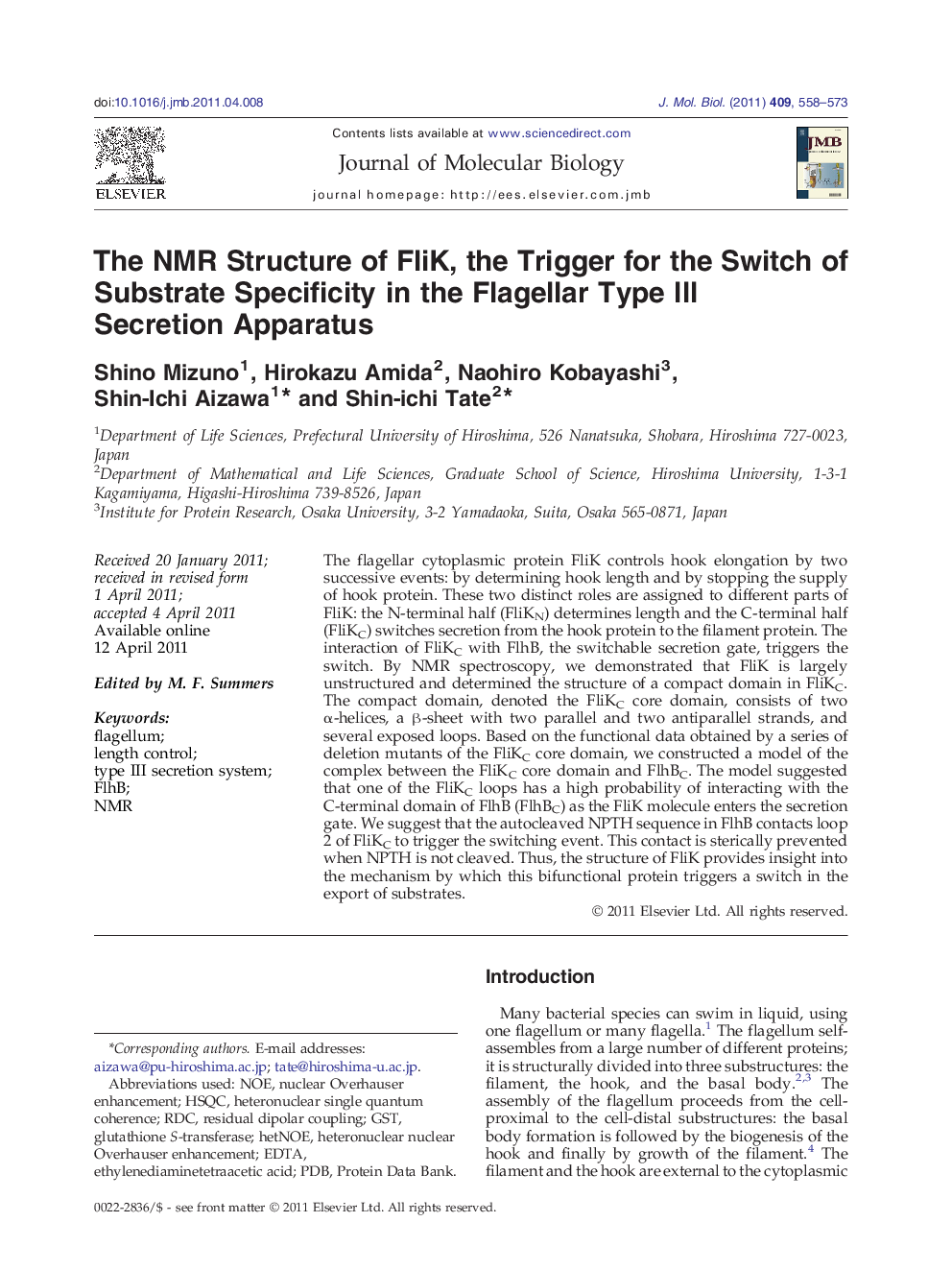| Article ID | Journal | Published Year | Pages | File Type |
|---|---|---|---|---|
| 2185352 | Journal of Molecular Biology | 2011 | 16 Pages |
The flagellar cytoplasmic protein FliK controls hook elongation by two successive events: by determining hook length and by stopping the supply of hook protein. These two distinct roles are assigned to different parts of FliK: the N-terminal half (FliKN) determines length and the C-terminal half (FliKC) switches secretion from the hook protein to the filament protein. The interaction of FliKC with FlhB, the switchable secretion gate, triggers the switch. By NMR spectroscopy, we demonstrated that FliK is largely unstructured and determined the structure of a compact domain in FliKC. The compact domain, denoted the FliKC core domain, consists of two α-helices, a β-sheet with two parallel and two antiparallel strands, and several exposed loops. Based on the functional data obtained by a series of deletion mutants of the FliKC core domain, we constructed a model of the complex between the FliKC core domain and FlhBC. The model suggested that one of the FliKC loops has a high probability of interacting with the C-terminal domain of FlhB (FlhBC) as the FliK molecule enters the secretion gate. We suggest that the autocleaved NPTH sequence in FlhB contacts loop 2 of FliKC to trigger the switching event. This contact is sterically prevented when NPTH is not cleaved. Thus, the structure of FliK provides insight into the mechanism by which this bifunctional protein triggers a switch in the export of substrates.
Graphical AbstractFigure optionsDownload full-size imageDownload high-quality image (65 K)Download as PowerPoint slideHighlights► Flagellar protein FliK is necessary for switching the substrate specificity of T3SS. ► We solved the structure of the FliK core domain by NMR. ► The domain consists of two α-helices and four β-strands. ► A loop between β1 and β2 is essential for switching. ► The loop may interact with a cleft of the autocleaved FlhB domain.
